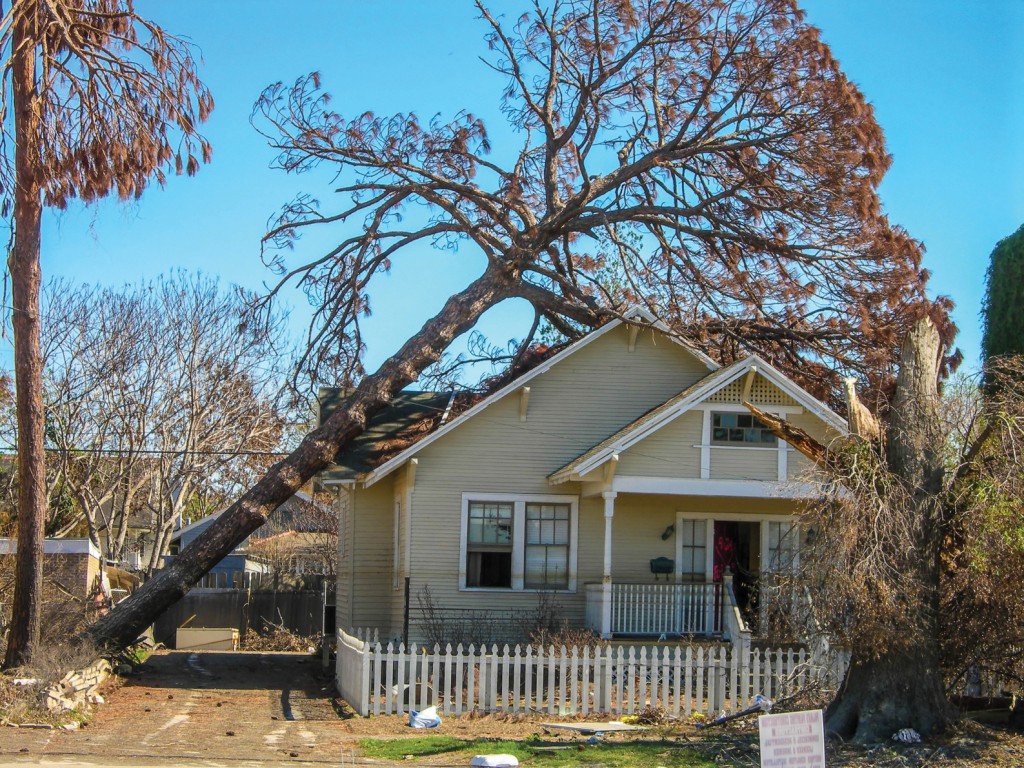Windstorms, ice storms, fires, lightning and even insect damage can cause trees or large branches to fall on your home and cause extensive property damage.
So how can you tell if a tree poses a danger to your property? What can you do if it does? And will your home insurance policy cover you if a branch or tree goes “timber” right through your bedroom window?

The warning signs
First of all, pay attention to the types of trees on your property. Some species are simply less hardy than others. Watch out for dead trees, trees with limbs that hang over power lines, trees with trunk cracks or hollows and trees with mushrooms growing on bark, the Institute for Business and Home Safety recommends. The shape of a tree’s branches and forks also can be relevant. U-shaped forks are less dangerous than V-shaped forks, because V-shaped forks split easier, according to the home safety institute.
Professionals can help homeowners prune their trees and remove those that might be dangerous. During pruning, do not cut too deeply into the trunk, as you could set the stage for insect infestation or decay, according to the home safety institute. Don’t over-prune, as this can weaken the tree and make it more likely to fall.
The damage
Trees and branches can damage your house in unusual ways:
- Branches can blow onto your property from a neighbor’s yard during a windstorm.
- Tree-related damage can set off secondary damage. Say a branch crashes through the roof during a natural disaster, splitting the roof and shattering some windows. Rain then pours in, causing leaking and mold damage, and perhaps even setting off an electrical fire.
- Tree roots can snap water lines and sewer lines, crack sidewalks and driveways, and split communications cables.
Insurance coverage
The good news is that your home insurance usually will cover tree-related damage. If a tree hits an insured structure (like your home), standard home insurance policies cover the damage to the structure and the contents inside, according to the Insurance Information Institute.
Even if the tree’s roots were in your neighbor’s yard, you should file a claim with your home insurance company. In this case, your insurance company may seek to collect from your neighbor’s insurer.
However, your insurance may not provide coverage for removing debris, unless the tree or branch blocks your driveway or causes damage, according to the Insurance Information Institute. If the tree simply falls in your yard, causing no damage, you’ll probably not be covered for removing it.
Trees themselves may be covered under your insurance plan. If lighting, vandalism or a fire destroys a beautiful old willow in your yard, you may be able to collect money for the loss. However, according to the Insurance Information Institute, home insurance companies usually limit coverage to about $500 for each tree.

2 thoughts on “Timber! Protecting your home from falling trees”